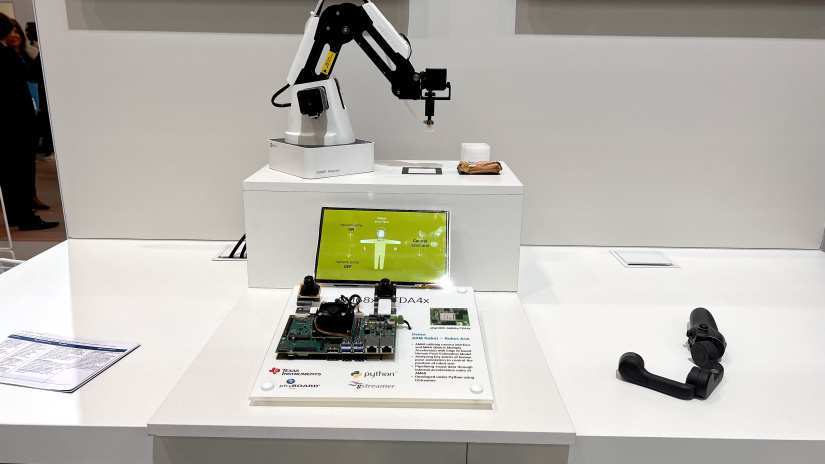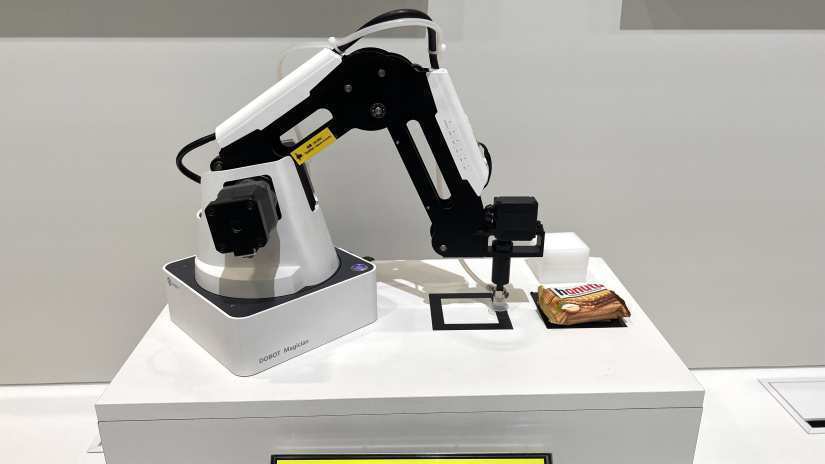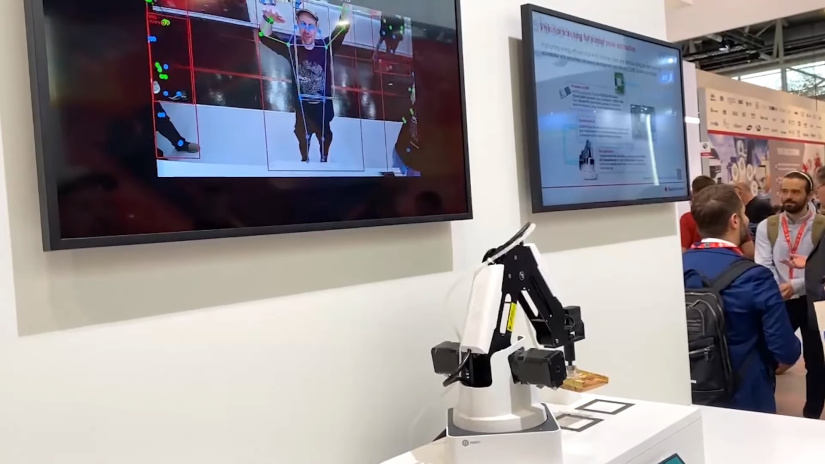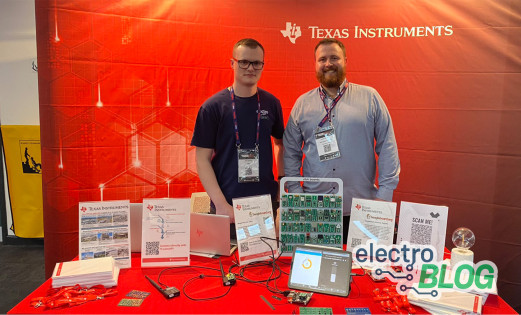Texas Instruments AI-Powered 'Human Pose' Estimation Technology
At Electronica 2024, Electomaker took a look at the latest advancements in robotics presented by Texas Instruments (TI). Among these innovations is an exciting demonstration of human pose estimation technology, merging AI and real-time processing to empower robotic arms with remarkable precision.
This breakthrough, powered by TI’s AM68A processor, brings a new level of control and efficiency to collaborative robotics, enhancing automation in environments that demand high precision and safety. By enabling robotic arms to mirror human movement, TI is pushing the boundaries of what's possible in industrial automation and hazardous environments.
High-Precision Robotics Powered by the AM68A Processor
At the heart of this robotic control system is Texas Instruments’ AM68A processor, designed specifically for high-precision tasks that require real-time responsiveness. The processor’s powerful edge AI capabilities and deep learning accelerators enable the robotic arm to process complex movements and commands seamlessly, making it ideal for repetitive, detail-oriented applications in industrial settings.

TI’s AM68A processor handles intensive tasks, such as image processing and pose estimation, with exceptional speed, thanks to integrated hardware accelerators. This architecture frees up the main CPU cores, allowing them to focus on application-specific tasks. As a result, the robotic arm can execute complex operations efficiently, enhancing both accuracy and productivity in demanding environments. Key features include:
- Real-time processing and control through TI’s AM68A processor
- Integrated accelerators for image processing and deep learning
- Optimized for industrial automation and repetitive precision tasks
Real-Time Human Pose Estimation: How the Robotic Arm Works
Utilizing advanced human pose estimation, Texas Instruments’ robotic arm system mirrors human movement to carry out precise actions. Powered by the phyCORE-AM68A system-on-module (SOM), the system captures and interprets visual data from a camera, translating arm and hand motions into control commands for the robotic arm.
In the demonstration, the right hand controls the robotic arm’s position, while the left hand enables and disables the vacuum pump, allowing the robot to pick up and move objects. This hands-free training method offers a practical solution for controlling robots in environments where direct human involvement is either unsafe or impractical, such as hazardous industrial zones.

This intuitive setup not only simplifies the process of teaching robots but also enables them to perform tasks instinctively, following natural human movements. The AI-driven pose estimation model makes it possible for operators to "train" robots without complex programming, enhancing efficiency and safety in various applications.
- Camera-based pose estimation captures human arm and hand movements
- Right-hand controls robotic arm position; left-hand controls vacuum pump
- Ideal for hazardous environments and repetitive industrial tasks
Application and Benefits of Pose Estimation in Robotics
TI’s pose estimation technology unlocks a range of applications for the robotic arm, especially in environments where precision and safety are critical. The system is particularly useful in:
- Hazardous environments: In settings with potential dangers like radiation or toxic chemicals, the robotic arm can be controlled from a safe distance, eliminating the need for direct human presence.
- Industrial automation: For tasks such as pick-and-place, loading, or unloading, the robotic arm’s accuracy and repeatability improve productivity, reducing human error and streamlining workflows.
- Instinctive task training: Human operators can instinctively perform tasks with their hands, which are challenging to teach through programming alone. This technology allows for natural, hands-on guidance that the robotic arm replicates, making it easy to "train" robots for complex manoeuvres.
With TI’s integrated edge AI and deep learning accelerators, the AM68A processor enhances not only the speed but also the precision of the robotic arm, making it an asset for industrial and scientific applications where high efficiency is a must.

Processor and Ecosystem Advantages
The Texas Instruments AM68A processor is equipped with advanced architecture designed for high-performance applications, incorporating A72 cores and integrated accelerators that streamline tasks such as image processing and deep learning. This specialized hardware handles intensive processing, allowing the main CPU to focus on specific application requirements, which is essential for seamless robotic control.
Moreover, TI’s ecosystem of third-party partners, including PHYTEC with their phyCORE SOM, simplifies the implementation process. This collaboration reduces setup time and provides developers with a reliable foundation for deploying robotics solutions in diverse industrial systems.
- High-performance A72 cores paired with image and deep learning accelerators
- Optimized for real-time robotics and machine vision tasks
- Supported by TI’s third-party ecosystem for streamlined development
For more information, please visit: https://www.ti.com/applications/industrial/robotics/overview.html
Did you enjoy this article?
Make sure you subscribe to The Electromaker Show for similar content and subscribe to our monthly newsletter!














































Leave your feedback...